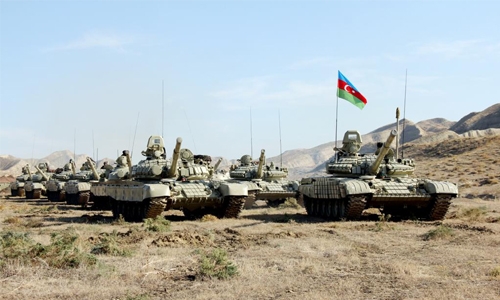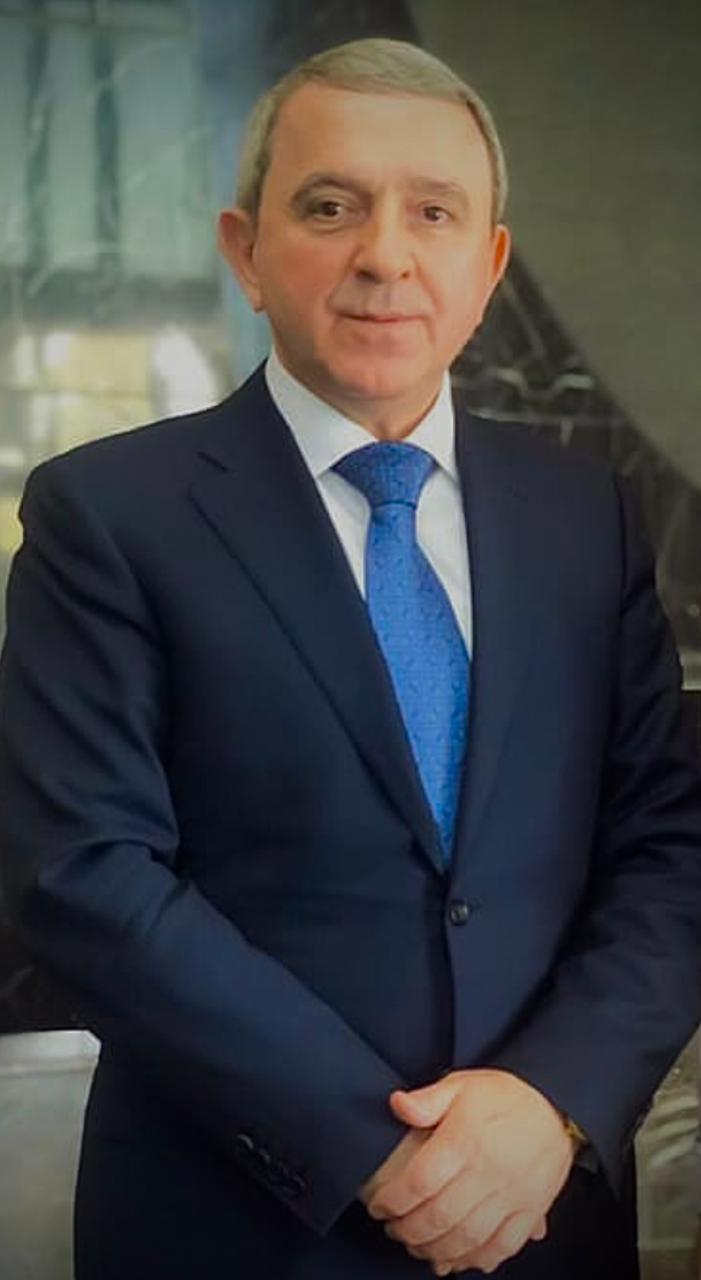Azerbaijan demand restoration of its territorial integrity
On September 27, 2020, the armed forces of Armenia blatantly violating the ceasefire regime launched another aggression against Azerbaijan (third time within this year), by intensively shelling the positions of the armed forces of Azerbaijan along the frontline.
The bombardment by Armenian armed forces of densely populated civilian areas and installations situated along the front line has been deliberate and targeted. In order to prevent another military aggression by Armenia and provide the security of densely populated civilian residential areas the Armed Forces of the Republic of Azerbaijan undertook counter-offensive measures within the right of self-defence and in full compliance with international law.
The new act of aggression by Armenia against Azerbaijan is the continuation of the latest provocations of Armenian side, including the attempt of an armed attack in the direction of Tovuz region on 12-16 July, 2020, the sabotage-reconnaissance group’s provocation in the direction of Goranboy region, illegal settlement policy in the occupied territories of Azerbaijan, as well as the provocative statements and activities of Armenian leadership.
The clashes are the worst since the 1990s, when some 30,000 people were killed, and are spreading beyond the Nagorno-Karabakh region of Azerbaijan. By constantly violating the ceasefire achieved in 1994, Armenia tries to consolidate the existing status-quo. Azerbaijan has repeatedly stated that Armenia’s ongoing military aggression against Azerbaijan and the presence of the armed forces of this country at Azerbaijani territories have remained a significant threat to regional peace and security. For the last 2 years chain of provocations committed by the new Government of Armenia both in words and deeds has undermined the negotiation process for the settlement of the conflict. Armenia continued to provoke and violate the ceasefire and Armenia’s defense minister even went so far as to call on the country to prepare for the pursuit of a “new war for new territories”.
Nagorno-Karabakh was made an autonomous region within Azerbaijan by the Soviet Union in the 1920s. During the dissolution of the Soviet Union in 1991, this autonomous region declared so called independence which is not recognized by any country including Armenia, but recognized as a part of Azerbaijan by entire international community.
In the intervening decades, the one constant has been the Armenian occupation of almost all of Azerbaijan’s autonomous territory of Nagorno-Karabakh and seven surrounding regions of Azerbaijan that together form about 20 percent of the country’s total territory. Armenia conducted the policy of ethnic cleansing against Azerbaijanis. Cultural heritage of Azerbaijani people and 63 of 67 mosques on the territory of today’s Armenia has been demolished and plundered. Armenia also destroyed all Azerbaijani historical and religious monuments in the occupied territories.
It is not the issue of dispute that these lands are occupied illegally and they must be returned: four UN Security Council resolutions and various OSCE documents directly related to the conflict make this clear, as do the formal positions of all the major powers, not to mention the rest of the world. The fact that Armenia has totally cleansed the occupied lands of its pre-war ethnic-Azerbaijani population has obviously not helped its claim of victimhood, neither has its present campaign to indiscriminately shell civilian targets like marketplaces or key pieces of infrastructure like hydro-power plants and dams deep in Azerbaijan.
So, irrespective of ancient grievances, a convoluted historical record, and whatever other vagarious claims have been put forward, the situation is, at the end of the day, unambiguous: the outcome to the conflict requires the end of Yerevan’s military occupation of these lands and the return of more than one million of Azerbaijani civilians to their homes.
The mediators – the co-chairs of the OSCE Minsk Group (Russia, France and the United States) – are at fault: there was a formal negotiation process that was launched in 1992, which had essentially produced no concrete results on the ground, in the sense that the occupation of Nagorno-Karabakh and the seven surrounding regions of the Republic of Azerbaijan has not come to an end, Azerbaijani refugees and IDPs have been prevented from exercising their right of return, and so on. In other words, for nearly three decades the Minsk Group led negotiations whose objectives were clearly and unambiguously set down on paper.
The Co-chairs gave themselves the responsibility to lead a defined process to achieve a defined result, and yet the conflict has remained frozen since a 1994 ceasefire was put into effect: none of the Minsk Group’s defined objectives have been achieved – not even close.
During last week Armenian armed forces subjected to missile attacks the densely populated civilian areas in Ganja, Mingachevir, Barda, Beylagan and some other cities of Azerbaijan. As a result of Armenia’s artillery and missile attacks, more than 30 Azerbaijani civilians were killed, more than 150 injured, more than 500 residential buildings and civilian objects destroyed (as of today, 07 October 2020).
After achieving a humanitarian ceasefire between Azerbaijan and Armenia on 10 October as a result of the rocket fire of the Armenian armed forces on an apartment building in the central part of Ganja, the second largest city of the Republic of Azerbaijan located outside the frontline, nine people, including four women, were killed and 34 people, including 16 women, among them six minors, were injured. Also, more than 10 apartment buildings and over 100 different facilities were damaged. Rescue operations are currently under way to rescue civilians trapped under the rubble.
In his speech to the 75th General Assembly of United Nations (UN) Azebaijani President Ilham Aliyev warned that situation was escalating as result of Armenia’s actions, and that there was increased military activity of Armenian troops along the line of contact.
President of Azerbaijan Ilham Aliyev has demanded Armenia to set a timetable to withdraw from the ocupied territories of Azerbaijan, to recognize the territorial integrity of Azerbaijan and to apologize to the Azerbaijani people. On October 4, 2020, Ilham Aliyev stressed Baku’s determination to liberate Nagorno-Karabakh from Armenian occupation, as he criticized the international community for failing to take any action against Yerevan’s aggression. “Karabakh is Azerbaijani territory. We must return, and we will return,” he said in a televised address, adding that Azerbaijan had waited 30 years to recover its lands. “Baku’s repeated calls for sanctions on Armenia went unheard,” Ilham Aliyev said, as he noted his country demands to know why the Organization for Security and Cooperation in Europe (OSCE) and the European Union did not punish Armenia for its crimes. He continued by saying that Armenia must accept that Karabakh did not belong to it and set a timetable for the withdrawal of its occupation forces.
Ambassador praised the efforts of the Organization of Islamic Cooperation (OIC) and added: "Our country needs political support from the İslamic world and the Arab world. They must have a firm position on Azerbaijan. The world must not equate the aggresor and the victim.”
Ambassador also mentioned that Azerbaijan has a strong army, and reports that foreigners are fighting alongside Azerbaijani troops do not reflect the truth. On the contrary Armenia recruits and uses mercenaries and terrorists from different countries against Azerbaijan. Armenian government is using the conflict to divert attention from economic problems and influence public opinion in the country.
In the end it should be one more time stressed that peace and stability in South Caucasus would be restored only after liberation of all occupied Azerbaijani territories.
HE Shahin Abdullayev
Related Posts


